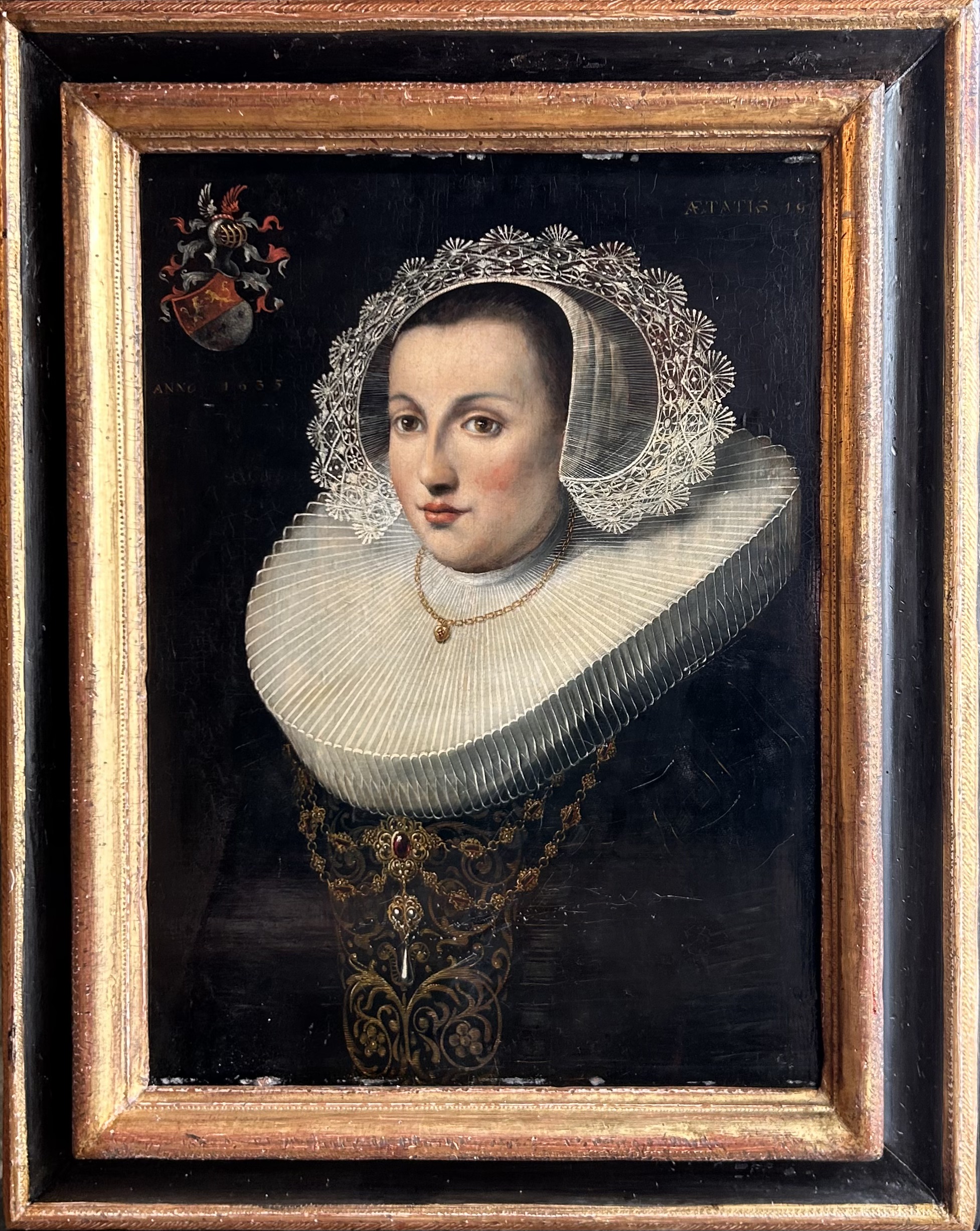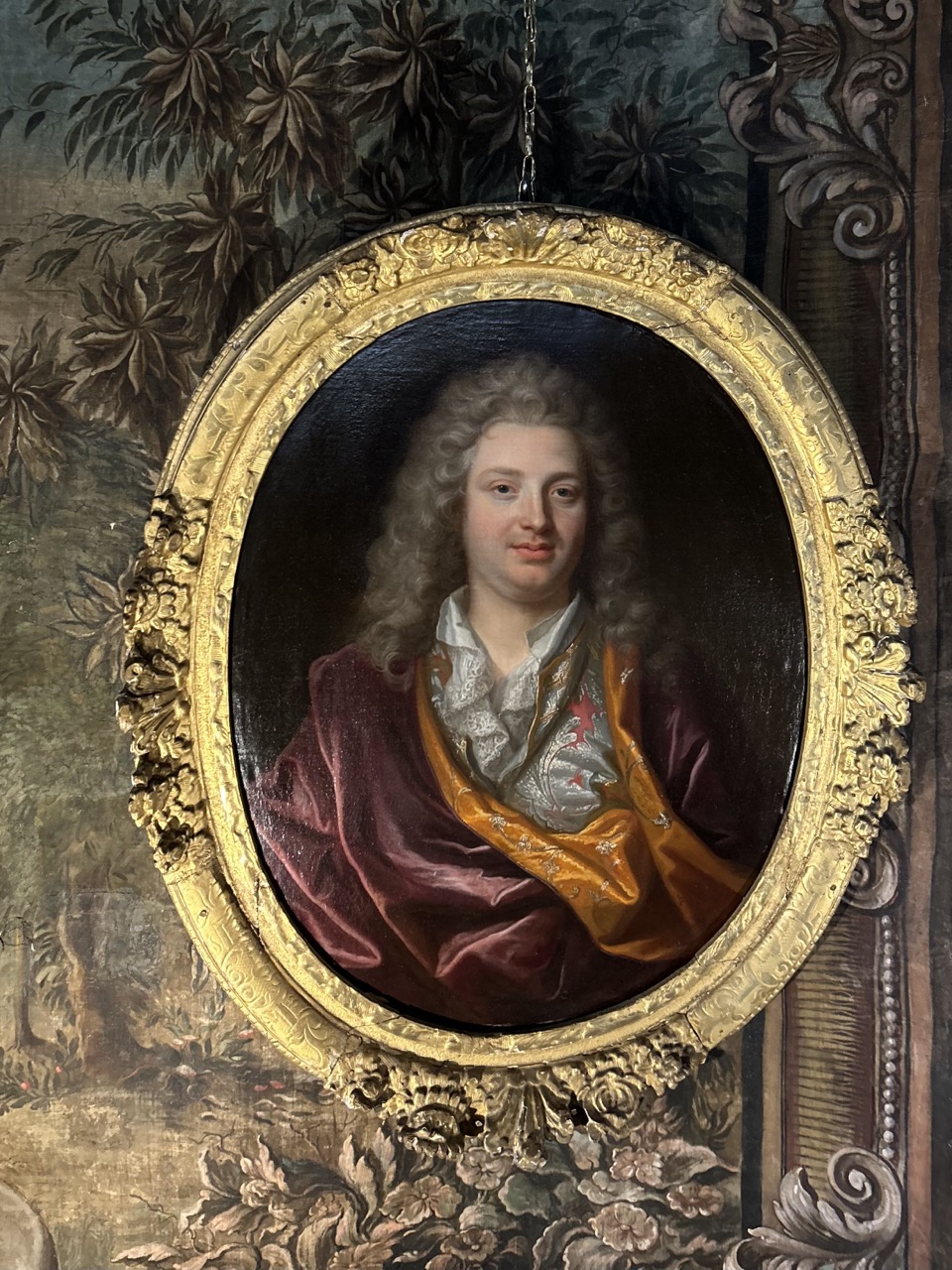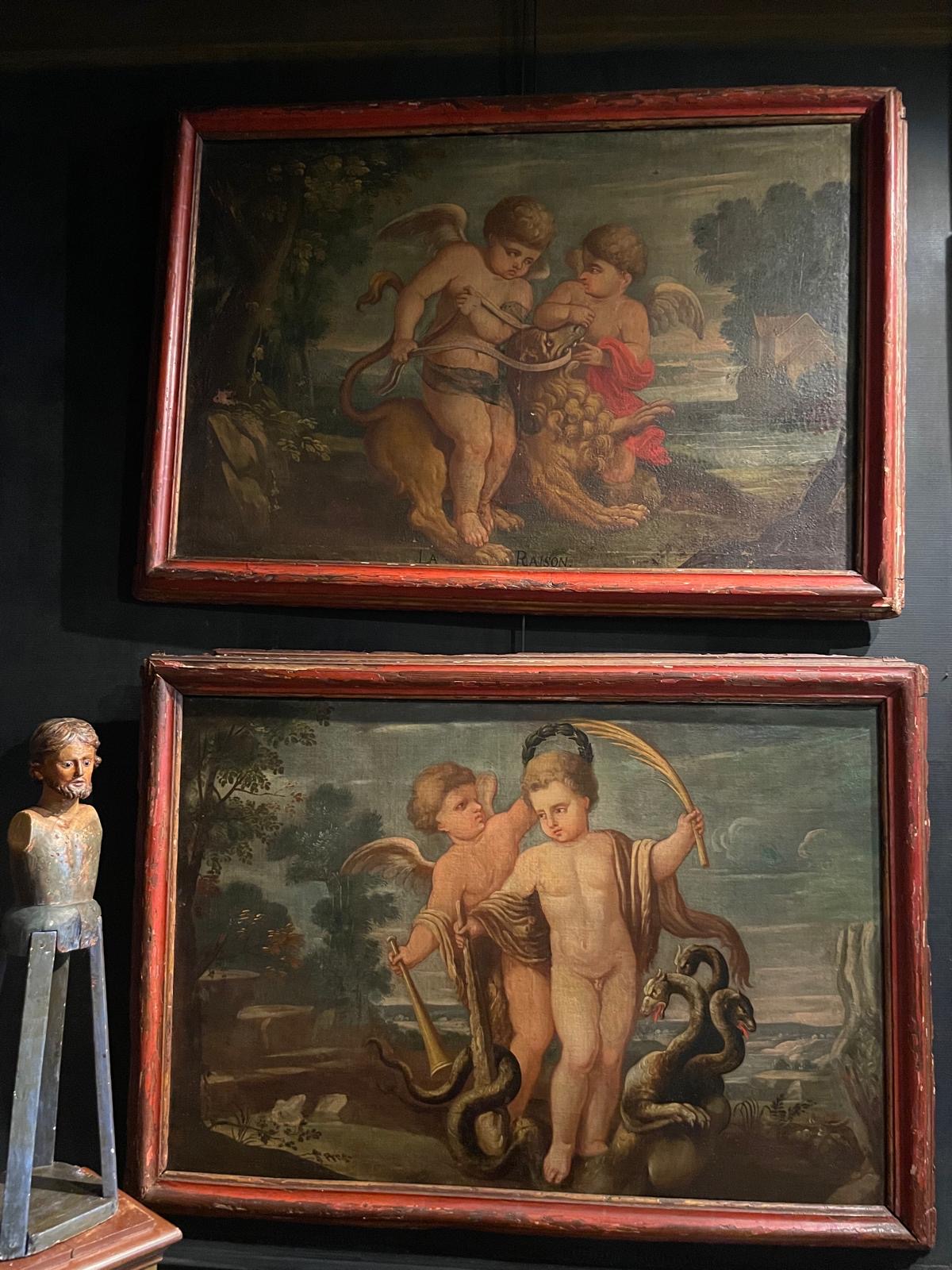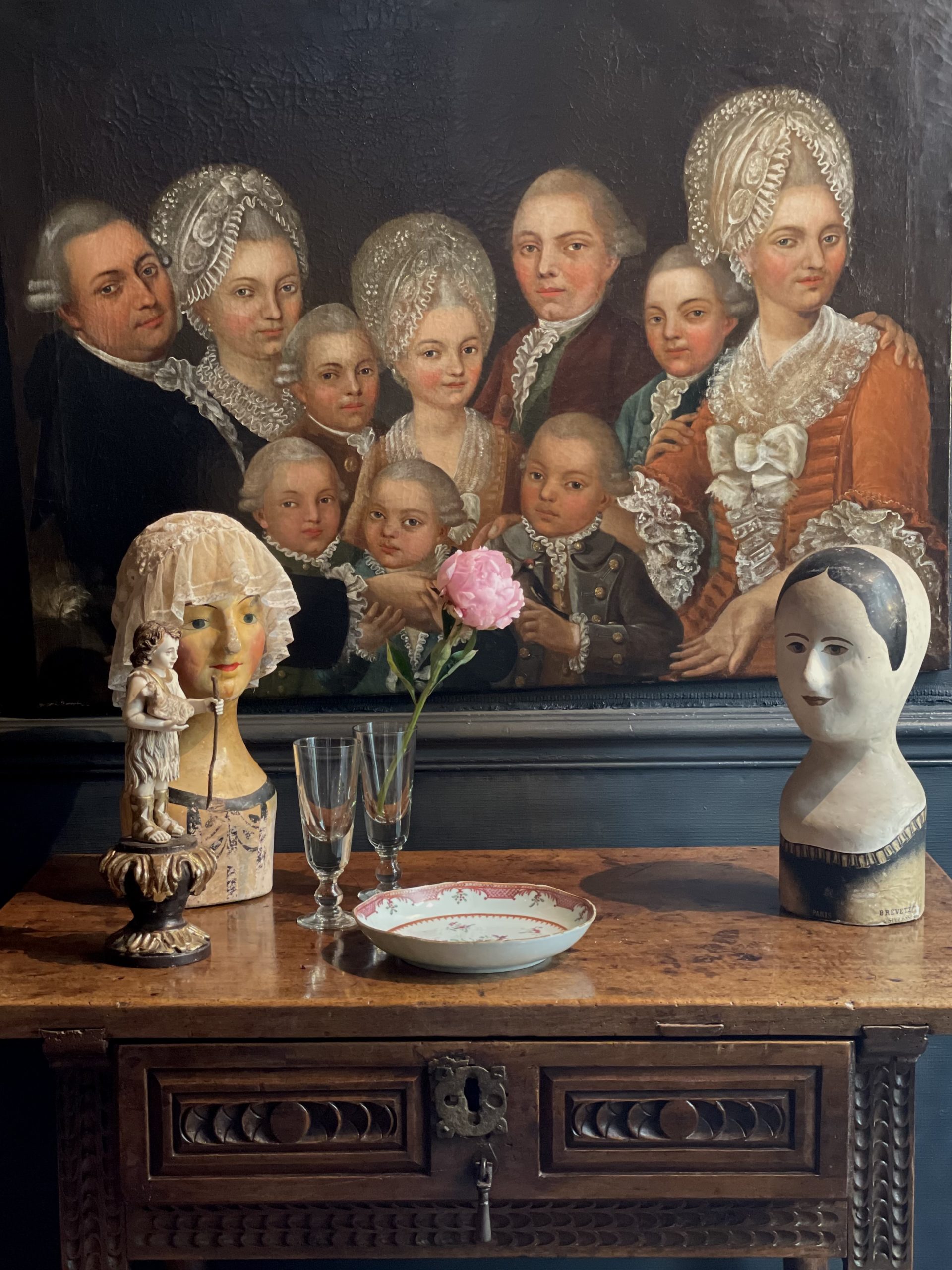Portrait of a young woman, oil on panel, inscription in Latin «aetatis 19»: at the age of 19, wooden frame patinated in the taste of Dutch frames of the seventeenth century.
Dutch school
Early 19th century in the taste of the 17th century
The banyan, inspired by oriental dressing gowns, was worn for its comfort and casual elegance.
The subject’s richly decorated orange silk scarf and silver-embroidered vest illustrate this fashion well. This style reflects the influence of cultural and commercial exchanges with the Orient, as well as the importance given to appearance and social status in the society of the time.
Large oil on canvas depicting two young girls, inscription on the back: “Portrait of Beuzelin ladies” by Madame Bullier, period gilded wooden frame.
Circa 1830
France
Set of five painted canvases representing allegories of Love, Justice, Reason, Fidelity and Glory, original polychrome carved wooden frames.
Italy
Early 18th century
Oil on panel representing the Child Jesus on the Cross, the Latin inscription “Cor meum vigilat” my heart is awakened.
Florentine School, Italy
17th century
Oil on canvas “Family portrait”, 10 faces and as many stories to invent and reinvent.
XVIII century
Austria
Oil on canvas “Portrait of a Gentleman”, follower of François-Hubert Drouais. We can approach this portrait of another signed by Drouais conserved at the Museum of Fine Arts of Orléans, cadre en bois sculpté doré.
French school
18th century
Oil on canvas depicting a portrait of a man in armor, gilded wooden frame, original canvas.
French school
XVIII century
Large oil on canvas “Adam and Eve, forbidden fruit”.
Tuscany, Italy
17th century
Painted canvas depicting a decor of castle and garden with ponds, birds, ibis, pelicans, all framed by a frieze of interlacing.
Provence, France
XVIII century










